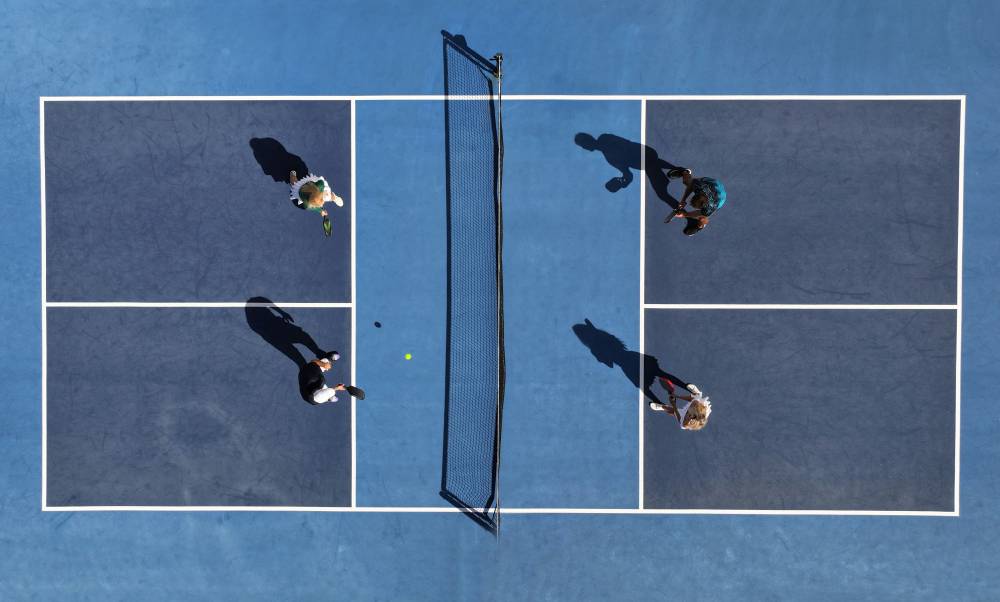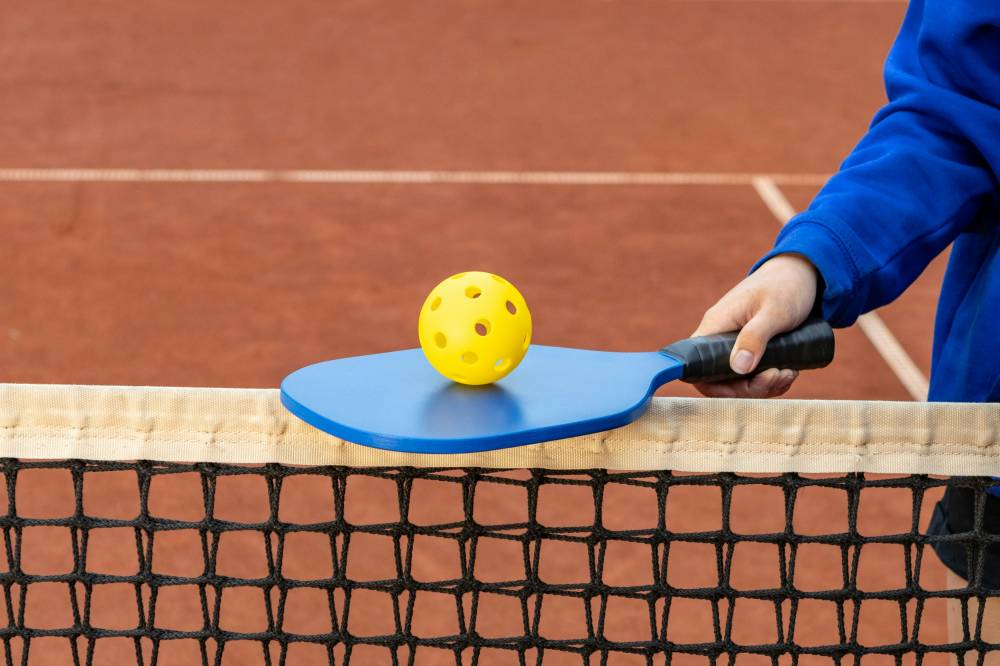Why is the world obsessed with pickleball?

I’ve never been into racket sports. Growing up, tennis was a family staple. Our television at home never missed a Grand Slam, while my first cousins even played at a competitive level. In middle school, I was made to join badminton, but I really used the time to chat with newfound girl friends. Come high school, whenever friends would set up table tennis at a party, I’d veer toward the beer pong area. Ever since, I’ve been indifferent to any sport that involves a racket.
So how did I end up falling for pickleball?
Like many others, I got hooked because it’s genuinely fun—and so easy to pick up that you can’t help but love it.
It started innocently enough: a few casual rallies in the garage of my in-laws’ house. One game turned into another, and before I knew it, my sister-in-law was seriously considering building a pickleball court. Meanwhile, I’ve found myself at work, secretly refreshing booking sites, hoping to snag one of the perpetually full weekend slots.
For those confident to take it beyond casual play, apps like Reclub make it easy to join open sessions around the city. These “open plays” are flexible court times where players, often complete strangers, can sign up and jump into games. While competitive, the community is also very welcoming.
From one backyard to a global craze
Pickleball was born in the summer of 1965 on Bainbridge Island in the Pacific Northwest. Three dads—Joel Pritchard, Bill Bell, and Barney McCallum—were simply trying to keep their kids entertained. Armed with a badminton net, ping-pong paddles, and a perforated wiffle ball (a plastic practice ball used in baseball), they invented a game that quickly became a family favorite among the adults, too.
As for its quirky name, it comes from the rowing term “pickle boat,” which refers to a crew made up of leftover oarsmen from other boats. It’s much like pickleball itself, which is a mash-up of elements from badminton, table tennis, and baseball.
Fast forward to today, pickleball is the fastest growing sport in the US, now on its fourth consecutive year. The sport is gaining momentum worldwide, from suburban courts to luxury resorts, and especially in the Philippines, judging by the country’s booked-up courts.

Pickleball 101
At first glance, pickleball looks like a mash-up of tennis, ping-pong, and badminton, but it comes with its own unique rules.
The court is about a third the size of a tennis court, making its ground coverage more manageable for players of all ages. Instead of rackets, you use solid paddles that are bigger than ping-pong paddles but smaller than tennis rackets.
Then there’s the perforated plastic ball. These often come in bright yellow, but can come in other fun shades like green and pink. Indoor balls typically have 26 bigger holes, while outdoor ones have 40 smaller holes.
Like most games, the rules may at first seem tricky, but are quite easy once you catch on. You can only gain a point when you serve, and the server always sends the ball diagonally across the court.
Games are typically played to 11 points. One of the defining features is the double-bounce rule, where after the first serve, both sides must let the ball bounce once before hitting it in the air.
And then there’s the “kitchen,” a no-volley zone nearest the net where smashing the ball is off-limits.
The rules are relatively easy to learn once you play a few games, with no confusing terms like tennis’ “love” to worry about.
All together, this makes the game fast, strategic, and surprisingly forgiving for beginners.
Why everyone’s saying yes to pickleball
Unlike tennis, you don’t need perfect footwork or years of practice since you were a wee thing. The learning curve is gentle, and you can expect to play decently after a couple of games. The pace is lively but relaxed, with plenty of natural pauses to chat and laugh mid-game.
For me, it’s become a way to connect with family without defaulting to a filling, drawn-out meal. My mom, who hasn’t swung a racket in years, has caught the pickleball bug, and we’ve found time to hang out with each other through pickleball ever since I moved out.
Even my titos and titas in their senior years love it. They’re often better than us youngins, too, as ex-tennis and pelota players—games that had their heyday, just like pickleball is having now.
But the real charm of pickleball is that it’s inclusive. A real family sport, it works for all ages as a fantastic full-body, low-impact activity that’s easy on the joints.
On top of that, it’s affordable. You don’t need expensive gear or club memberships. Just your trusty racket and some balls, and you’re good to go.
And unlike many racket sports, it doesn’t seem to be about winning or obsessing over scores either. After a game, I rarely remember who won—I just know how much fun I had.
But why do some still say no?
Naturally, pickleball isn’t everyone’s cup of tea (or should we say, paddle of choice?). Tennis purists, for one, often turn their noses up at it. But ironically, with the games’ similar form, their skills translate well on the pickleball court.
Then there’s the sound of the sport: that sharp pop of the plastic ball hitting the paddles. In the US, that sound has sparked actual noise complaints in some neighborhoods.
And let’s not forget turf wars. Pickleball courts have been carved out of tennis, badminton, and even basketball courts, ruffling feathers along the way. Some critics have also dismissed it as a passing fad, much like Manila’s pelota craze in the ’70s.
But if global trends are any indication, pickleball isn’t going anywhere soon. For millions, it’s easy to learn, a solid workout, and the perfect excuse to gather with friends or family. And all in all, it’s a whole lot of fun.
Maybe that’s why most of the world says yes.
Pro tip: Check the Reclub app for where to play pickleball in the PH

















